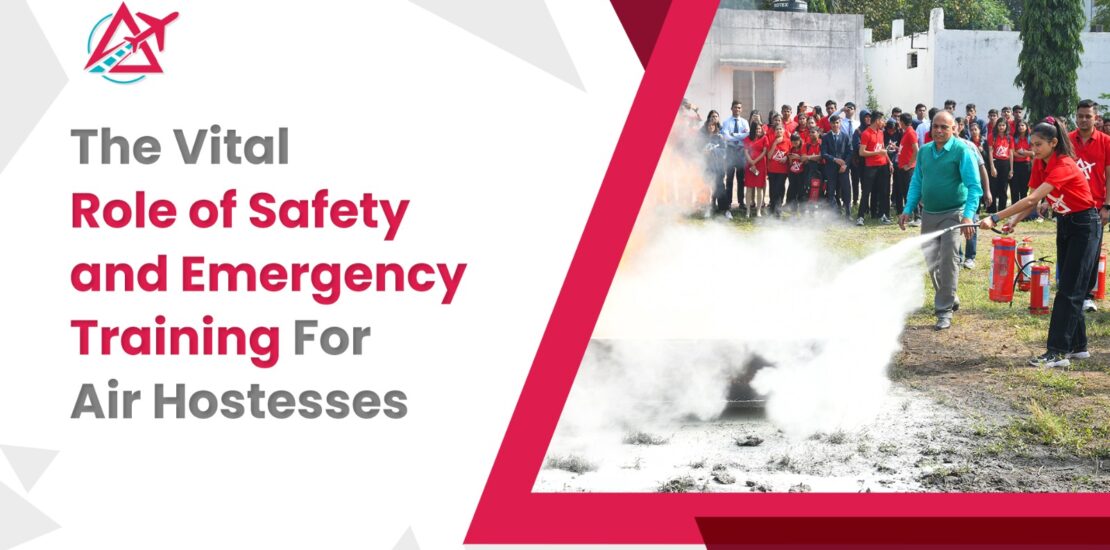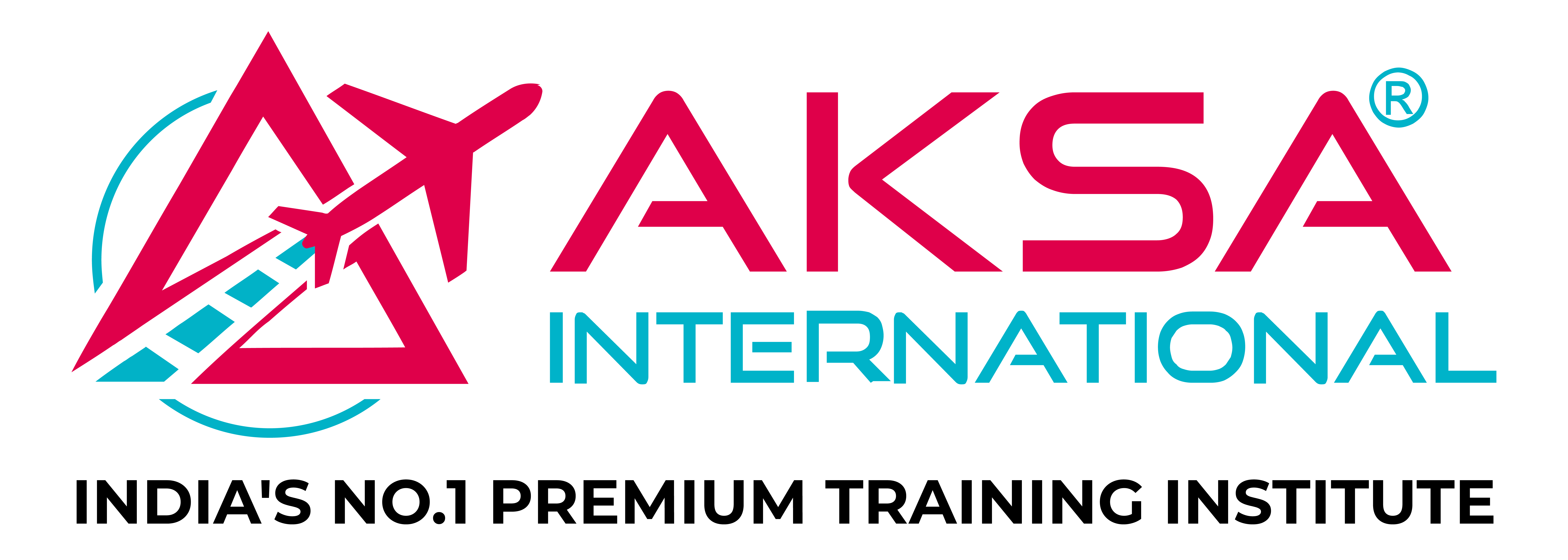- July 8, 2024
- Posted by: admin
- Category: Career in Aviation

In the glamorous world of aviation, where air hostesses are often associated with impeccable service and glamorous travel, there lies a crucial aspect that forms the backbone of their profession: safety and emergency training. While the allure of traveling to exotic destinations and meeting new people is undeniable, the primary responsibility of an air hostess is to ensure the safety and well-being of passengers on board. In this blog, we’ll delve into the paramount importance of safety and emergency training for air hostesses, exploring why it’s not just a requirement but an essential aspect of their role.
Safety First, Always
The safety of passengers and crew members is the highest priority for airlines around the world. Air hostesses undergo extensive training to prepare for various emergency scenarios that may occur during flights, ranging from minor incidents to life-threatening situations. This training covers a wide range of topics, including:
- Emergency Procedures: Air hostesses are trained to respond swiftly and decisively in the event of emergencies such as fires, medical emergencies, or onboard security threats. They learn how to assess the situation, communicate effectively with passengers and crew, and take appropriate action to ensure the safety of everyone on board.
- Evacuation Drills: In the rare event of an emergency landing or evacuation, air hostesses play a crucial role in guiding passengers to safety. They learn how to evacuate the aircraft quickly and efficiently, directing passengers to emergency exits and assisting those who may require special assistance, such as children or individuals with mobility issues.
- First Aid and CPR: Air hostesses are trained in basic first aid and CPR techniques to provide immediate assistance to passengers in medical emergencies. From administering oxygen to treating minor injuries, their training equips them with the skills and knowledge needed to respond effectively to medical situations until professional medical help can arrive.
- Aircraft-Specific Training: Each type of aircraft has its unique features and emergency procedures. Air hostesses undergo specialized training to familiarize themselves with the layout of the aircraft, location of emergency equipment, and procedures specific to that aircraft model. This ensures that they can respond quickly and effectively in any situation, regardless of the type of aircraft they are working on.
The Power of Preparation
The importance of safety and emergency training for air hostesses cannot be overstated. While the likelihood of experiencing a major emergency during a flight is relatively low, being prepared for any eventuality is essential for ensuring the safety and well-being of passengers and crew. Safety training not only equips air hostesses with the skills and knowledge needed to handle emergencies but also instills confidence and a sense of calmness in the face of adversity.
Moreover, safety training goes beyond just emergency procedures—it also encompasses preventive measures to mitigate risks and ensure the smooth operation of flights. Air hostesses learn about safety protocols and regulations, including the proper stowage of luggage, securing of cabin doors, and adherence to seat belt and no-smoking policies. By proactively addressing potential hazards and maintaining a vigilant attitude towards safety, air hostesses contribute to creating a safe and secure environment for everyone on board.
Moreover safety goes beyond just to enhance
Building Trust and Confidence
In addition to ensuring the physical safety of passengers, safety and emergency training also play a crucial role in building trust and confidence among passengers. Knowing that air hostesses are well-trained and capable of handling emergencies can alleviate anxiety and reassure passengers that they are in good hands. Clear communication and swift action during emergencies can make all the difference in calming nerves and instilling a sense of confidence in passengers’ minds.
Furthermore, safety training demonstrates the professionalism and dedication of air hostesses to their role. By investing time and effort into continuous training and skill development, air hostesses demonstrate their commitment to providing the highest level of service and ensuring the safety and well-being of passengers on every flight.
Conclusion: Safety First, Always
In the fast-paced world of aviation, safety and emergency training are not just boxes to be checked but fundamental pillars of the air hostess profession. The importance of safety training cannot be overstated—it is the foundation upon which air hostesses build their careers and fulfil their responsibilities to passengers and crew.
From mastering emergency procedures to honing their first aid skills and maintaining vigilance towards safety at all times, air hostesses play a vital role in creating a safe and secure environment for everyone on board. By prioritising safety and investing in continuous training and skill development, air hostesses uphold the highest standards of professionalism and ensure that passengers can travel with confidence and peace of mind, knowing that they are in good hands.
In the ever-changing landscape of aviation, one thing remains constant: safety first, always. And for air hostesses, safety and emergency training are not just a requirement but a commitment to excellence and a testament to their unwavering dedication to ensuring the safety and well-being of all who take to the skies.

